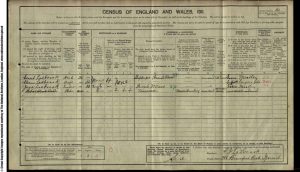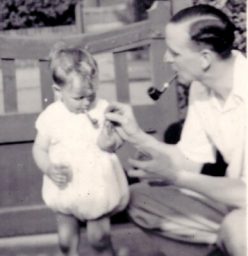There was a census taken every 10 yrs from 1801 to date – the only one that is missing is 1941 due to the war. The 1801-1831 censuses were taken by the Overseers of the Poor and the Clergy, in the main they no longer exist but there are exceptions around.
It often depended on who answered the door on census night as to what information was give to the enumerator – so if mum and dad were out and the teenage son/daughter answered the door – the ages and places of birth given were often wrong. For example how would a child know the birth town of a parent? This can be often wrong on the census, including wild guesses at ages! The other problem is that the householder was often illiterate and did not have a clue how their name was spelt, or they were not from the area and had a different accent – so what was written was down the enumerators interpretation of what was said!
Throughout all the censuses you will see the word ——— do ———- often in the midst of a line – this is the same as ditto or as above.
You will often see the word Windower for Widower too, and don’t forget words with a double s in them were often written as double f or f then s – eg: Glass could be Glafs or Glaff.
In 1841 the responsibility for the census returns was handed over to Registrar General and the Superintendent Registrars who were responsible for the recording of births, marriages and deaths following general registration in 1837.
The censuses become more useful the more recent they are and are subject to a 100 year rule to ensure the privacy of living people.
The first census completed by the Registrar General was in 1841 and was taken on the evening of the 6th June. This census has the least information and recorded:
place – often no house name or number was recorded
houses – shown inhabited/uninhabited/being built
name
age – separate columns for males and females
profession, trade, employment or independent means
born – Y or N for in County or S – Scotland, I – Ireland, F – Foreign
You will see that no relationships are given between people in the family. All ages 15 and above should have been rounded down to the nearest 5 year multiple, i.e. 15 may be 15-19, 20 may be 20-24, etc. Another point to remember for ages is that people often said that they “were in their 60th year” meaning that they had passed their 59th birthday. If a person gave information meaning they were in their 60th year, they will be shown as being 60, whereas strictly keeping to the rules, they should be recorded as 55.
The 1851 census was taken on the 30th March and improved as below:
house number and street
name and surname
status in the household and relationship to the head of the household
marital status – M – Married, S – Single, W – Widowed
age – column for males and females
rank, profession or occupation
place of birth – town and county
whether they were blind or deaf and dumb
The 1861 census was taken on the 7th April and appeared as above except there was an additional column regarding the houses and Uninhabited ones were shown as U, and those being built shown as B.
The 1871 census was taken on the 2nd April and was the same as the 1861 census except the last column was extended to show numbers if appropriate they were – Whether 1 – Deaf & dumb, 2 – Blind, 3 – Imbecile or idiot, 4 – Lunatic. Charming!
The 1881 census was taken on the 3rd April and was as per 1871 except age was age at last birthday.
The 1891 census was taken on the 5th April, it was as per 1881 except there were extra columns added for the number of rooms occupied if less than 5, whether that person was an employer or was employed or neither, the previous entries that had been two on previous censuses were merged to become number 3 – Imbecile, Idiot or Lunatic.
The 1901 census was taken on the 31st March, it was as per 1891 with the addition of a column for home workers and the term idiot was replaced with feeble-minded!
The 1911 census was taken on the 2nd April and was different in that it wasn’t taken by an enumerator it was completed by the householder, so for the first time you can see their writing and the signature of your relative! It contained the data that was in the 1901 census with additions for duration of the marriage, how many children had been born during the marriage, how many had died and how many were still alive, it also recorded any illnesses or conditions a person had and what age they were when that began. Householders often included the family pet on the census too Bob the Black Colly is listed as being born in the stable and being in charge of the mice!!

